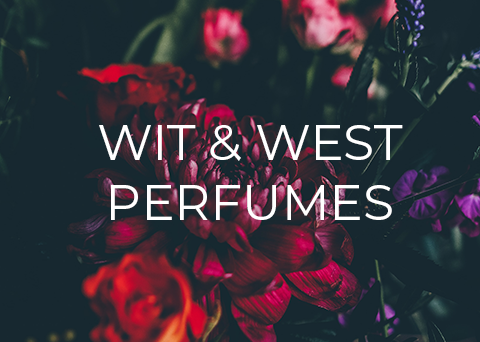Reflections on Perfumery's History

Photo Credit by Wit, Owner & Perfumer for Wit & West Perfumes (photo of Perfume and Pharmaceutical Officine of Santa Maria Novella, Florence, Italy)
Scent and Olfaction
As an indie natural perfumer, the world of scent and perfume is fascinating to me. Scent is tied to the elusive and often ignored olfactory system, our sensory system that governs the sense of smell and is also linked to taste, memory recall and our emotions. Perfume has the power to stimulate our sense of smell, tapping into our emotions or connecting us to memories and past experiences. Beyond its connection to our sense of smell, to better understand the world of perfumery it is worthwhile to discuss its significance from a cultural and historical perspective.
Perfume's 5,000 Years of History: From Ancient Egypt to Medieval Alchemists, Florence to Grasse
The word perfume is derived from the Latin word “per fumus” which translates as “through smoke”. Perfume has a long history as the art and craft of perfume-making evolved over 5,000 years. Historically speaking, perfume has roots in medicinal, social and religious uses. The first uses of perfume can be traced back to Ancient Egypt, Mesopotamia and Cyprus where perfumes were blended with aromatics and rare raw materials such as resins, oils and fragrant herbs. Over time perfume became more of a sign of wealth and status.
Modern perfume and perfume-making methods used today can be traced back to major technical advancements made during the Middle Ages, including extraction methods such as distillation introduced by Persian alchemists. During this time, the first attars or oils distilled from plants were introduced, and then their influence expanded across Europe. Improvements in distillation allowed for the creation of a perfume “base” with the introduction of distilled spirits (i.e., high-proof alcohol). In addition to distilled spirits, distillation also allowed for the creation of essential oils, or oils that are released from aromatic plants and obtained via high-pressure steam distillation and hydro-distillation (or water/steam distillation). By 1370, the creation of the modern-day perfume appeared; a combination of alcohol and essential oils including rosemary and later lavender - called "Hungary Water" and named after Queen Elizabeth of Hungary. In other parts of Europe, perfume was starting to see expansion as well. The Perfume and Pharmaceutical Officine of Santa Maria Novella, a high-end retail apothecary in Florence, Italy, is considered to be the oldest pharmacy in the world and one of the earliest retail establishments that brought perfume to the public. Established in the 1200s by the church, monks used the pharmacy in caring for the sick during the Bubonic Plague (aka Black Death). In fact, rose water was developed during this time for treatment of the plague. By the 16th century the pharmacy had become famous for its scented products including incense and potpourri. Meanwhile, in Medieval Italy, it was common for royalty to have a personal perfumer. Catherine de Medici, a member of Florence’s nobility was known for extravagance including having a personal perfumer (a special perfume was made for Medici by the Officine of Santa Maria Novella, Acqua della Regina, or “Water of the Queen”). In 1533, Catherine married King Henry II becoming the Queen of France. A lesser-known fact about the queen is that she introduced the country of France to the world of perfume – making it a pillar of status for anyone of importance. Fast forward to today and the Perfume and Pharmaceutical Officine of Santa Maria Novella in Florence is still open to the public and includes a retail shop with high-end perfume as well as a museum. To learn more, or if you are ever in Florence and have some extra time, I highly recommend checking out the legendary Santa Maria Novella pharmacy.
The Expanding Perfumer’s Palette: Naturals to Synthetics
The evolution of perfume continues even today. Originally, perfume was used for medical and religious purposes; then by royalty during medieval times; and in the early 20th century expanding beyond the rich, famous and regal to the public. How did this happen? The availability of perfume beyond the elite class is rooted in an expansion of the perfumer’s palette with rare and unique ingredients as well as marketing. The development of new extraction methods including solvent extraction, a method that allowed the perfumer access to previously unavailable absolute oils extracted from flowers including orange blossom, tuberose, jonquil and jasmine. In addition to a wider array of natural ingredients, synthetics were also introduced allowing the perfumer the ability to complement natural essences. Some of the most iconic perfumes in history were developed in the early 20th century including Mitsouko, Shalimar, Miss Dior and Chypre. Francois Coty, the famous French perfumer, was the first to market perfume to the public with a mix of synthetic and natural essences. In addition to these new formulations, he also created smaller bottles and gift packs with soaps and lotions at accessible price points. At this time only about 20% of a perfume’s structure consisted of synthetics. However, this era marked the beginning of an overall shift away from the use of natural ingredients.
In the 1980s and 90s, perfume flipped dramatically from the mix of synthetic and natural ingredients to synthetics dominating most compositions, with more perfumes being comprised of almost entirely synthetic ingredients. Why did this happen? The short answer is cost. Ingredients like rose otto (rose essential oil) can cost over $500 per ounce due to low yields and the labor required to grow, harvest and extract rose oil. On the other hand, the synthetic aroma chemicals that make up the aromatic framework of a rose may only cost $100 per ounce (or less). While the mainstream perfume industry moved towards synthetic ingredients, thus protecting product margins and uniformity, another trend was underway. Natural perfumes re-emerged, based on the increased interest in natural, artisanal beauty products.
Natural Perfume: The Olfactory Experience
If you have never worn natural perfume the experience will be quite different from what you are used to. While I admit that there are many mainstream perfumes (made with either entirely synthetic ingredients or a mix of natural and synthetic ingredients) I absolutely adore, most do not seem to have the same depth as natural perfumes. Typically, mainstream perfumes do not evolve over time like natural botanical perfumes and tend to smell the same from first spritz to 12 hours later. This is generally done on purpose, hence why most people believe this is what a perfume should smell like. I find this a bit boring. Consider a burning fire in the fireplace. The fire does not burn the same from the moment it is lit until it is extinguished. As the fire becomes hotter, with smoke rising and wood crackling, there is a sense of temporary stability. The fire’s strength wanes and begins to die down, eventually burning out with only ash left. Similarly, this type of lifecycle is part of the magic of natural perfume. Natural perfumes evolve on the skin, creating an experience that changes throughout the day. Perfumes are formulated with base, middle and top notes. Each differs in terms of how long the scent lingers on the skin due to varying rates of evaporation. The top notes, which you smell upon the first spritz, are generally light, sweet, slightly spicy, or citrusy. Top notes give an initial welcome into the fragrance, and typically last anywhere between 15-60 minutes. The middle, or heart notes, are floral, sometimes spicy. Middle notes linger a bit longer, between 2-3 hours. The base notes, which last the longest, consist of woods and resins, and last 3 or more hours. This evolution is what makes perfume beautiful, interesting and personal – the way perfume is meant to be.
Perfume and the art of natural botanical perfumery – an olfactory interpretation of an essence in its true form – is something that can transport us to another time and place. The interweaving of perfume, culture and history has evolved for thousands of years and is something to be celebrated. To me, perfume is more than a fad and more than simply smelling good. It is about creating a personal story and attaching us to history, culture and the natural world around us.
-Wit
100% Natural Perfumes & Colognes by Wit & West Perfumes
If you are new to natural perfumes made from 100% all-natural ingredients, check out our individual samples as well as our sample sets on our website by visiting the Wit & West Samples. We have a sample set that's perfect for anyone who isn't familiar with the genre of natural perfume. The sample set includes five (5) of our most popular perfumes and colognes curated by Wit & West perfumer, Wit: New to Natural Perfume Sample Set.
References
Essence and Alchemy: A Natural History of Perfume by Mandy Aftel. Salt Lake City: Gibbs Smith, Publisher (2004). ISBN: 1586857029. Available on Mandy Aftel’s website Essence & Alchemy (aftelier.com).
Fragrance: The Story of Perfume from Cleopatra to Chanel by Edwin T. Morris. Charles Scribner’s Sons Publisher (1984). ISBN: 0-684-18195-9. Available on Amazon.

